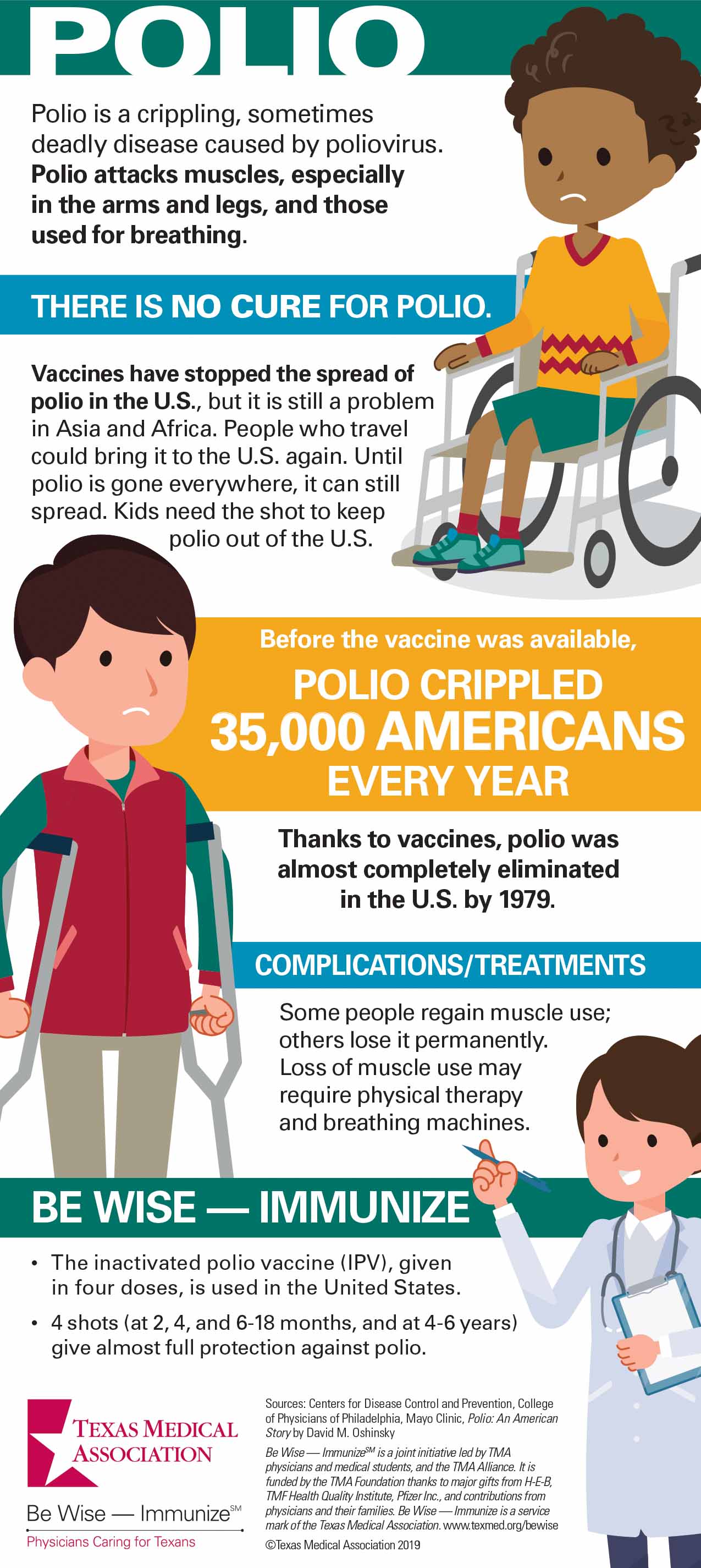
Polio once terrified Americans. In the late 1940s and early 1950s, the virus crippled around 35,000 Americans a year, according to the Centers for Disease Control and Prevention. Because polio often attacked abdominal muscles used to breathe, many died or permanently needed a respirator called an iron lung.
Polio was sometimes called “infantile paralysis” because it mostly affected children 5 and under. However, President Franklin D. Roosevelt, the disease’s most famous victim, contracted it as an adult. His activism helped create the first polio vaccine in 1955. By 1979, polio was mostly eradicated in the United States. But children here are still vaccinated because the disease remains a problem in Asia and Africa, and it could spread when people travel.
Polio should not be confused with the recent outbreak of a rare neurological illness with similar paralyzing symptoms, called acute flaccid myelitis (AFM). (Read more about AFM in a recent Me & My Doctor blog post at tma.tips/AFM.) Polio has almost entirely disappeared from the United States thanks to vaccines.
Two polio vaccines exist: inactivated polio vaccine (IPV) and oral polio vaccine (OPV). Since 2000, only IPV — given in four doses — has been used in the United States because it is safer and more effective. But OPV still is used in many countries.
Download a printable copy of the infographic below.

Tex Med. 2019;115(2):47
February 2019 Texas Medicine Contents
Texas Medicine Main Page
Last Updated On
August 08, 2022
Originally Published On
January 29, 2019